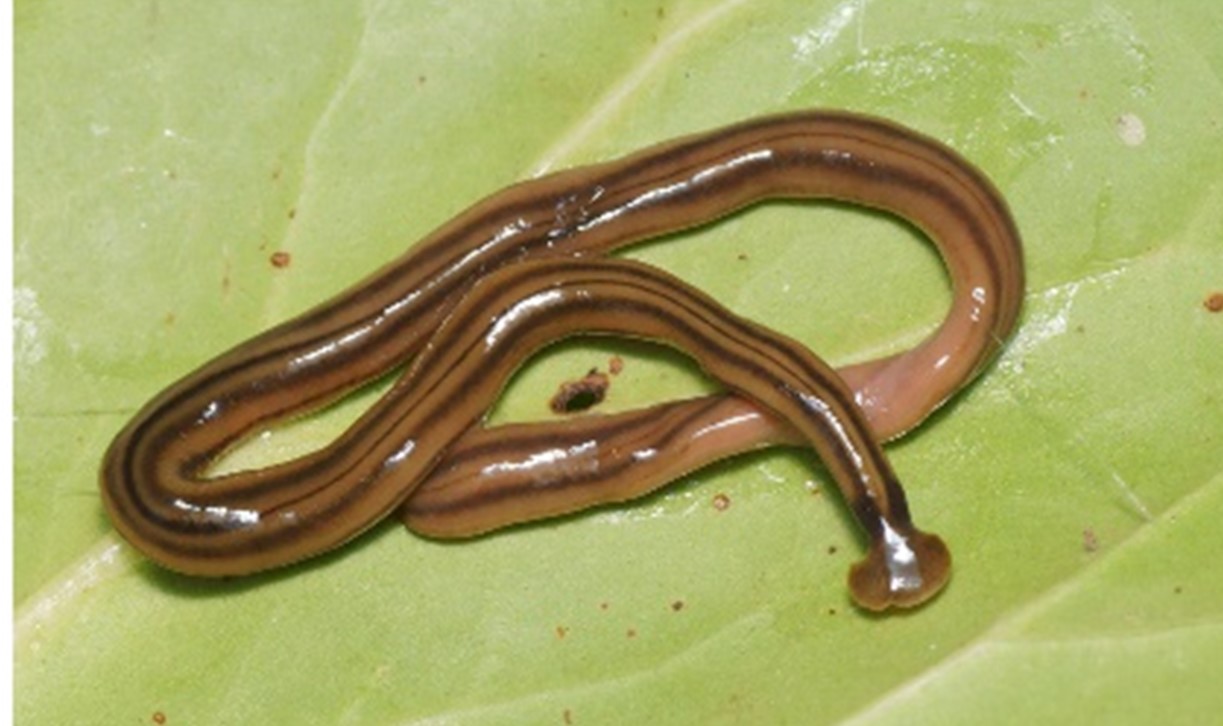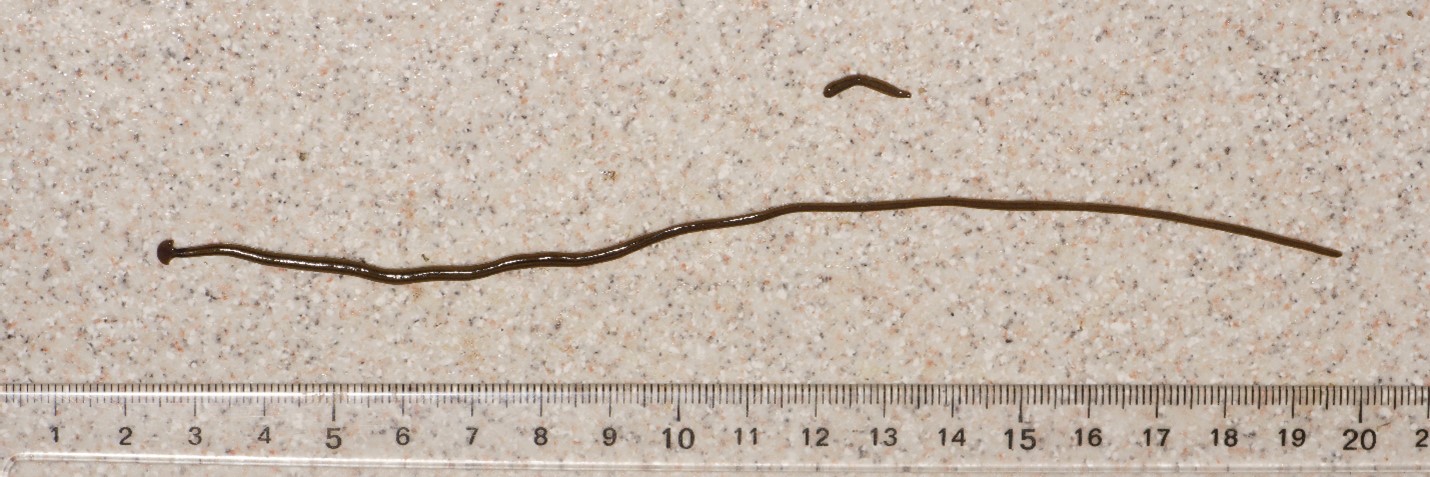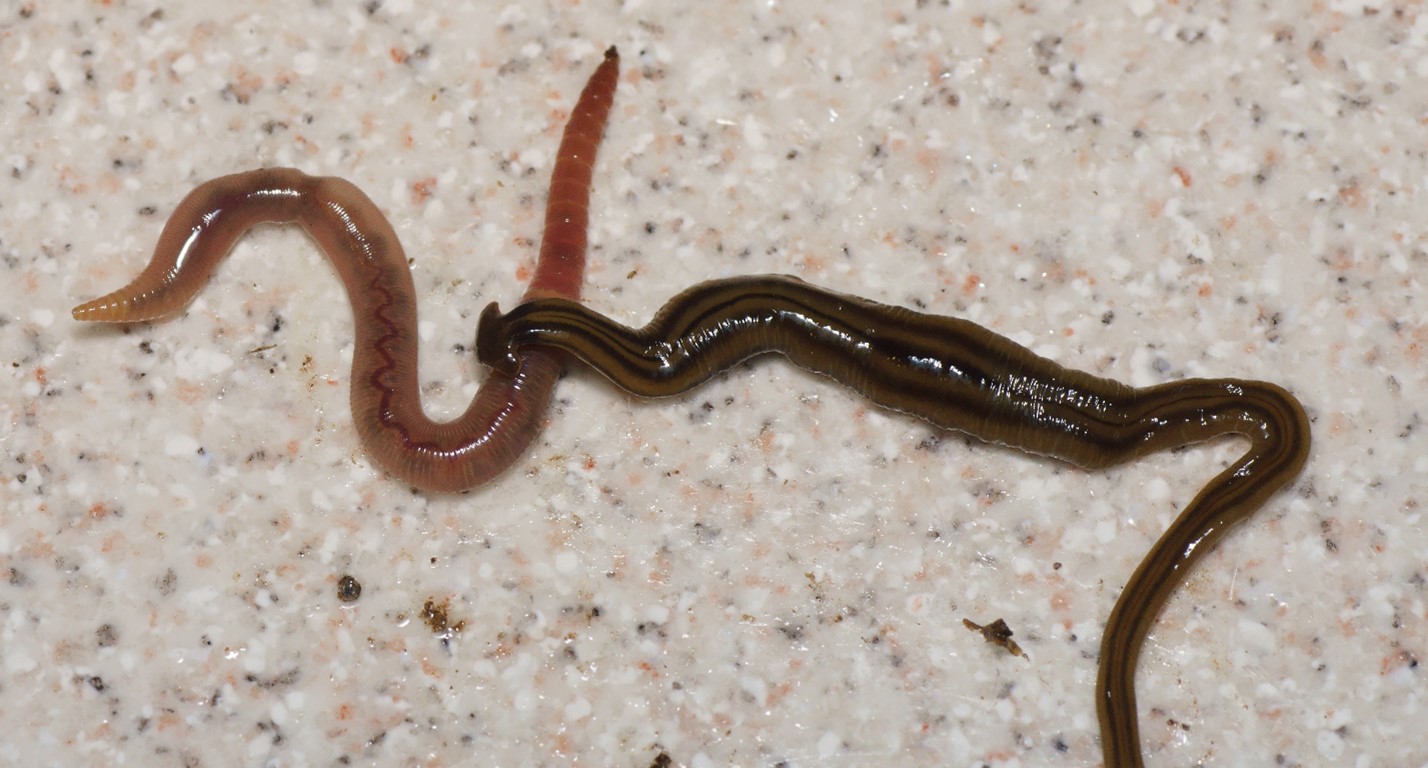Agriculture and Natural Resources Blog
Contact
Agriculture and Natural Resources
Jon Zawislak
Assistant Professor, Apiculture and Urban Entomology
Phone: 501-671-2222
Fax: 501-671-2252
Email: jzawislak@uada.edu
University of Arkansas
Division of Agriculture
Cooperative Extension Service
2301 S. University Avenue
Little Rock, AR 72204
Hammerhead Worms in Arkansas
Vic Ford, Associate Vice President – Agriculture and Natural Resources, Jon Zawislak, Assistant Professor – Apiculture and Urban Entomology and Whitney Haigwood, Technical and Social Media Writer – Agriculture and Natural Resources
Key Points about Hammerhead Worms

Bipalium kewense. Photo by Pierre Gros. CC BY-SA 4.0. Source: Wikimedia Commons
- Hammerhead worms are flatworms, a terrestrial planaria.
- They are present across Arkansas and in neighboring states.
- It is not necessary to report them to your county extension office, the state extension office or the Arkansas Department of Agriculture.
- They are an invasive species that prey on earthworms and may pose a threat to the earthworm population.
- Wear gloves if you must pick one up to protect yourself from irritating secretions.
- If you find a hammerhead worm, do not hesitate to kill it. Use salt, vinegar solution or citrus oil. Do not chop their bodies, as this does not kill them, and each piece becomes a new worm.
What are hammerhead worms?
Hammerhead worms are a complex, predatory flatworm species. These land-based planaria are also known as the shovel-headed garden worm. Hammerhead worms are not native to North America, and the long-term environmental impact of this invasive species has not yet been determined.
Reports suggest hammerhead worms have been present in Arkansas for over a decade. The first reports came from the southern part of the state, and these flatworms can now be found across Arkansas. They are also present in neighboring states and throughout the Gulf Coast. It is suspected they were introduced to North America from Asia, in soil transported through the horticulture industry. Hammerhead worms prefer warm climates with moist soil conditions. You may find them in yards, gardens, forests, fields, or greenhouses. They tend to avoid light, preferring to move and feed at night. During the day you may spot them resting in cool, damp locations.

Adult Bipalium kewense and tail fragment that will regenerate by fission. Photo by Pierre Gros. CC BY-SA 4.0 Source: continenticola
Bipalium kewense is the most common species of hammerhead worm reported in Arkansas. They have a flat body with 1 to 5 dorsal stripes. These flatworms grow 8 to 12 inches long, sometimes longer. The most notable characteristic of a hammerhead worm is its broad, shovel-shaped head. The head of the worm has eyespots, and it is used as a sensory organ. The mouth and anal orifice are the same organ, and it is located further down the body where the worm both ingests food and expels waste.
These planaria are regenerative, and they can quickly restore damaged body tissue. They regularly break off pieces of their long tails while moving through the soil. These fragments that are left behind can regenerate into new worms. Each piece of the body potentially becomes a whole new worm within days.
Are hammerhead worms dangerous to humans and pets?
They can be. However, they are more irritating than harmful. The toxin secreted by hammerhead worms can cause a rash if handled with bare hands. Wear gloves if you must pick one up. Wash skin immediately if you come in contact with one, and caution children not to pick them up. Be cautious if pets encounter hammerhead worms, as the toxin can make them sick if eaten. No serious injuries or deaths have yet been attributed to hammerhead worms.
What should you do if you find a hammerhead worm?
Do not hesitate to kill it. It is recommended to kill them with salt, vinegar or citrus oil. Whatever method you choose, do not chop them up. Cutting a hammerhead worm with a garden hoe or shovel does not kill it. Instead, it encourages the reproduction of this species, as the pieces will regenerate into new worms.
Researchers are aware that this species is present across Arkansas. It is not necessary to report hammerhead worm encounters to your county extension office. Instead, consider sharing your observation on the iNaturalist website, to increase our knowledge of this worm’s known range. This citizen science project catalogs the presence and distribution of living things. You can learn more by visiting their website, with a page dedicated to the shovel-headed garden worm.

Bipalium kewense capturing an earthworm. Photo by Pierre Gros. CC BY-SA 4.0 Source: Wikimedia Commons
Final Thoughts
Hammerhead worms potentially pose a threat to the common earthworms, but only time will tell. Hammerhead worms also lack natural enemies in North America. However, they are also cannibalistic if their populations get too high. Thus, the long-term environmental impact is unknown for now.
For more information, you can refer to this recent news release from the University of Arkansas System Division of Agriculture.
Sources:
http://www.tsusinvasives.org/home/database/bipalium-kewense
https://www.southernliving.com/travel/texas/long-worms-texas-hammerhead-flatworms-invasive-species
https://www.thoughtco.com/hammerhead-worm-facts-4178101
http://blogs.ifas.ufl.edu/escambiaco/2020/11/16/weekly-what-is-it-hammerhead-flatworm/